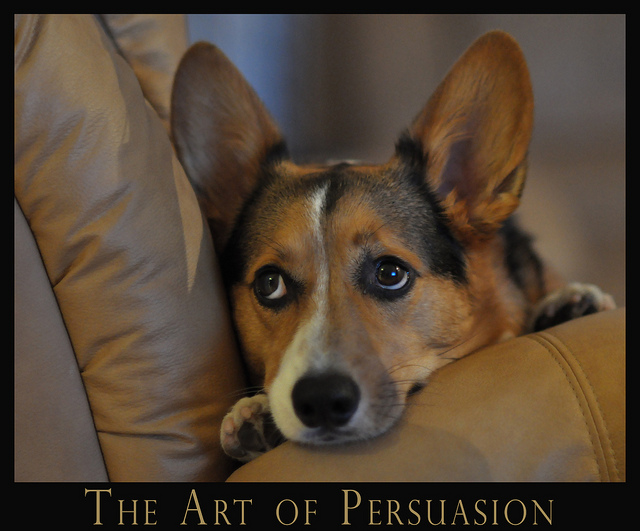Let’s face it. A lot of what you do as an NPO is about persuasion. You need to persuade people that your cause is important, for example. You need to persuade people that your cause should win their contributions, and you need to persuade people that your cause is in greater need than another cause. That’s a lot of persuading! That’s why when I saw an infographic all about the “science of persuasion” I immediately thought of all of the fine folks who read this blog. The infographic breaks down a few different ways to approach persuasion. This post will take those generalities and offer specific recommendations for nonprofit organizations.
Reciprocity
The infographic shows how simply offering an after-dinner mint can increase a waiter’s tip. If the waiter turns around, then comes back and says, “Well, here’s an extra mint just for you,” their tip can increase exponentially. Essentially, the waiter is creating a reciprocity scenario. Extra nice treatment entices the guests to offer an extra nice tip.
How can your organization persuade based on reciprocity? One of the easiest ways is to offer gifts at different donation levels. PBS does a particularly effective job in offering gifts that they know will be lusted after by their audience. Keeping people informed about how their contribution helped can also make a big difference. Check out how Charity Water does this because they do a very good job of nurturing their relationships with their contributors.
Scarcity
The next factor the infographic covers is scarcity. The example they use is that if a resource becomes scarce, everyone will rush to buy it. Scarcity can work or NPOs in many ways, but one of the most persuasive things an organization can do is indicate that time is scarce. Time can be scarce in terms of actually fixing the problem your organization is trying to address. If a species is about to go extinct, you will be better able to persuade people to donate so that the species can be saved. Your fundraising campaign can also be limited in terms of time. People feel a greater urgency to donate if they feel like time is running out to do so.
Authority
Naturally, people are more inclined to believe someone whom they feel is credible and/or authoritative on a given subject. Your organization can try to partner with a noted expert in the field or you can work on building the brand of your organization so that you are recognized as a thought leader in your area of focus.
Consistency
Consistency here means starting with small commitments and then enticing other people to commit because it does not seem like that big of a deal. One could argue that online activism can be persuasive in this way. One person changes their profile pictures, for example, and then suddenly many more people have done the same thing. Offering the option of donating in small amounts (and especially indicating what those small donations can do for your cause) is also a way to use consistency to build your persuasive efforts.
Liking
The infographic points out that (not surprisingly) it is easier to persuade people if they like you. There are a lot of effective ways these days to get your target audience to really like you. Instagram accounts showing your personality are a great way to show your personal side, as are YouTube videos. Hosting events that allow people to get to know you is another great way to reach out and be “likable.”
Consensus
This concept is similar in some ways to the idea of consistency. People can be persuaded simply by seeing what their friends and family members are doing. If you can get momentum for your fundraising campaign, it can get to a point where it starts to grow on its own because more people see it and want to get involved. This is where a lot of organizations will say that they want to try to reach “influencers” online to help build that feeling of consensus. That can work on occasion, but per the idea of authority, you want to make sure that person actually knows what he or she is talking about.
How have you tried to persuade people to contribute or otherwise support your cause? Have you tried any of the techniques above? We’d love to hear from you!
